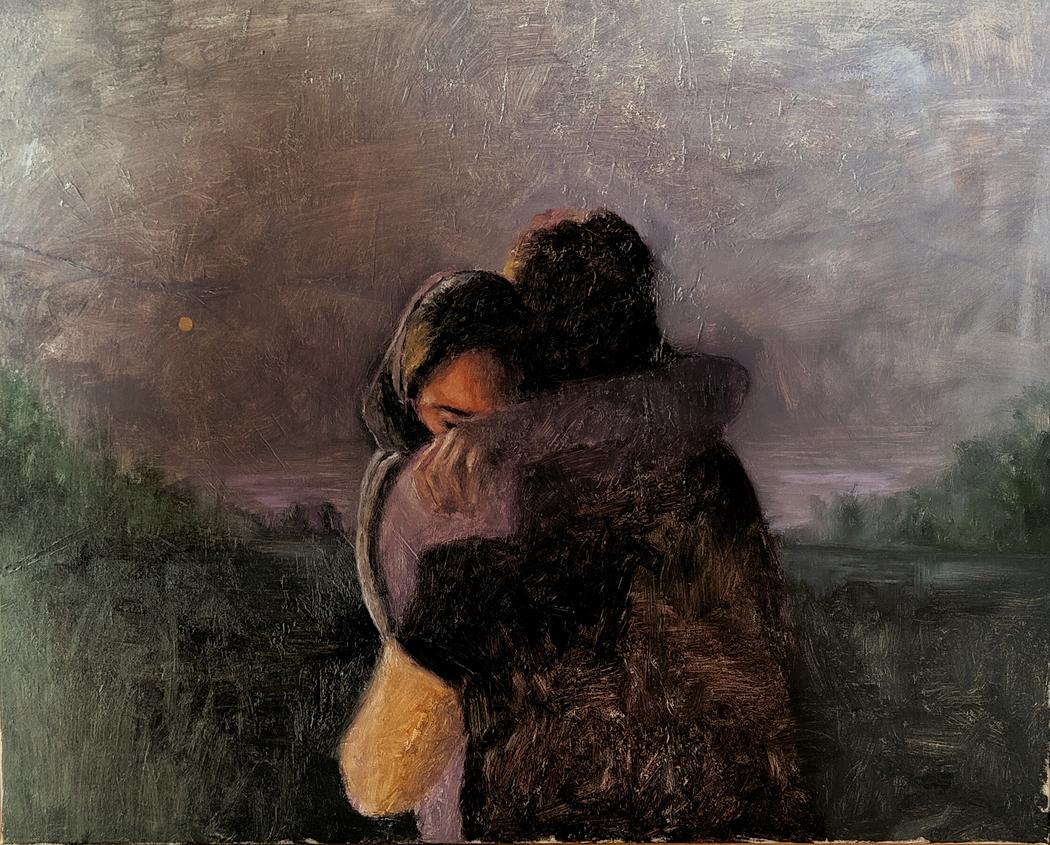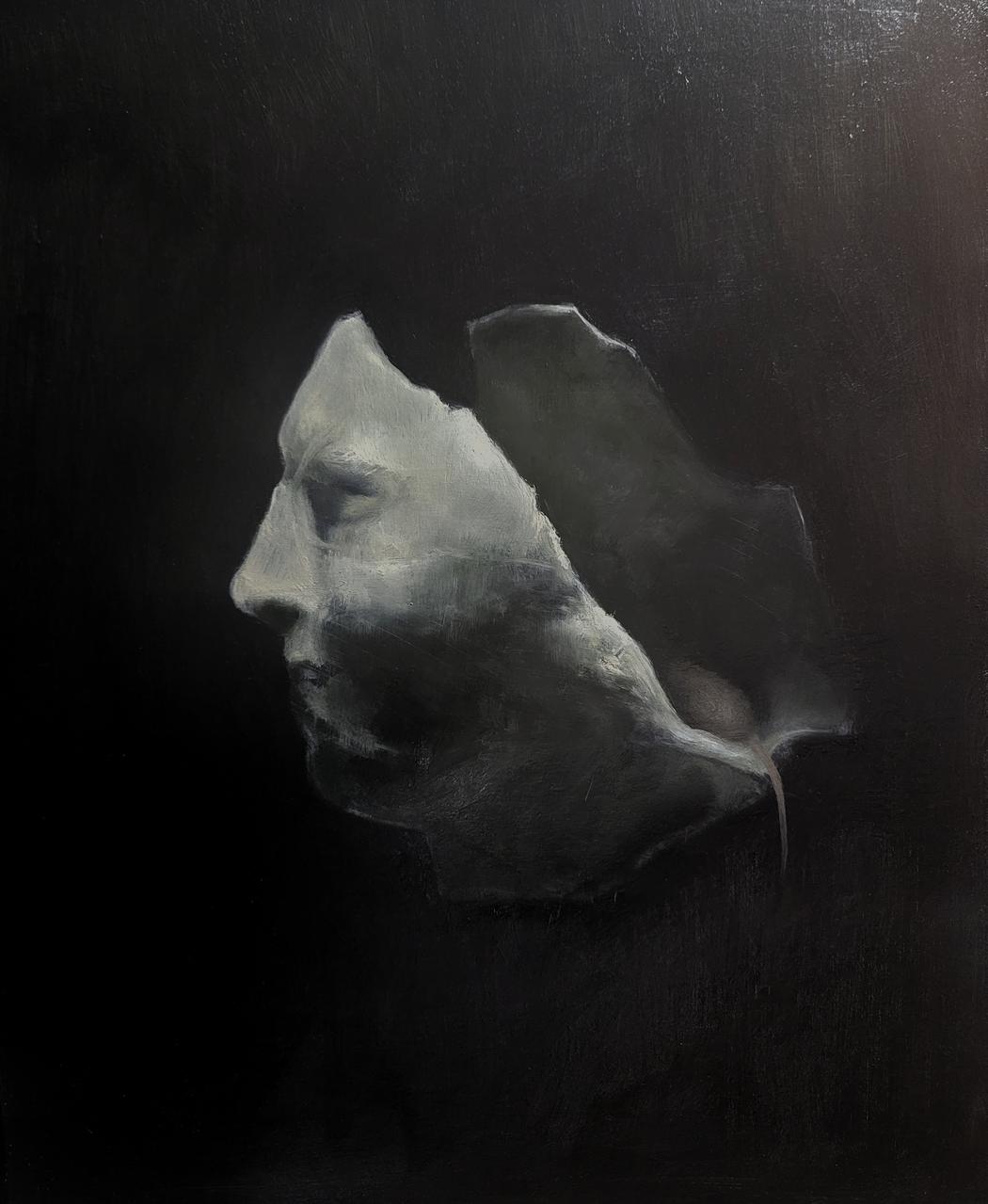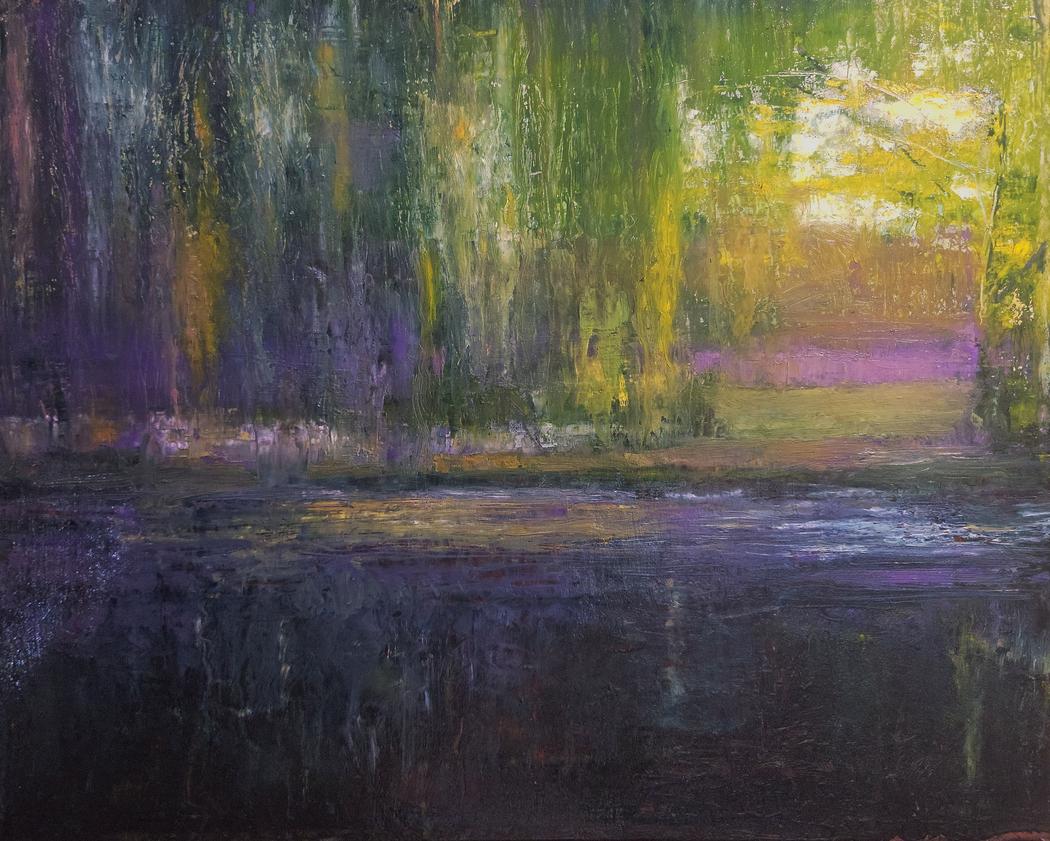Marid.K

Year of birth: 1982
Where do you live: Louisiana, United States
Your education: Bachelor of Philosophy
Describe your art in three words: Contemporary · Figurative‐Expressionist · Conceptual
Website
 Marid.K | Goodbye | 2025
Marid.K | Goodbye | 2025
You grew up in Basrah. What are your earliest memories of making art there, and how did that environment shape your way of seeing?
My earliest memories of making art were very simple: drawing on scraps of cardboard or paper, using whatever I could find. Electricity would go out for hours during war time, and I’d sit by the window tracing the way light shifted across the walls. The environment shaped me in ways I didn’t understand at the time. War and silence coexisted; beauty and destruction stood side by side. That duality taught me to look beyond appearances to see what’s hidden between layers of dust, shadow, and memory.
You work across oil, acrylic, watercolor, charcoal, and graphite. How do you choose the medium for a given idea, and what textures or techniques are you chasing with each?
Some ideas require something immediate or raw, I use charcoal because it leaves a mark that feels alive, almost trembling. Oil and acrylic come when the idea has more density, when it demands color, atmosphere, or a sense of time, Each medium is a language, and I don’t force them to say the same thing. I let the material lead me, and through its texture I find the emotion of the work.
 Marid.K | Politician | 2025
Marid.K | Politician | 2025
Years of war and instability in Iraq deeply marked your vision. How do you translate that experience into images without reducing it to mere reportage or illustration?
I don’t try to paint the events themselves; I paint the residue they leave behind. What interests me is not to paint the explosion itself, but the stillness after it, the way dust hangs in the air, the way a room remembers absence. I translate that feeling into light, into texture, into the tension between what’s visible and what’s fading. My work is not reportage; it’s remembrance. It’s how memory breathes when history grows heavy.
In the works we’re showing—an intimate embrace, a fragmented profile emerging from darkness, the violet/green forest with reflections, and The Bride with birds—what do these recurring motifs (concealment/revelation, water, dusk, doves) mean to you?
Those motifs return because they feel like parts of the same dream, Water and dusk are thresholds. Water reflects but also distorts; it’s memory made visible, I think of the sensation of that moment. “The Bride ” isn’t about marriage in the literal sense, but about the delicate moment before transformation ,innocence touching awareness, freedom meeting longing. I think of painting as an act of uncovering, not to expose, but to understand the beauty of what remains partially veiled.
 Marid.K | Purple Forest | 2025
Marid.K | Purple Forest | 2025
Your palette often leans toward deep violets, greens, umbers, and luminous grays. What emotions or places does this color language come from, and how do you think about light in your paintings?
It depends on the mood and the subject, it’s not necessarily decorative but more of an emotional connection in that moment, as an inner feeling. I think of light not as a source but as a witness, it reveals what time has touched. It’s the identity of any shape construction. Every painting begins in shadow, and light slowly finds its way in.
You left Iraq and arrived in the U.S. in 2012. How did displacement—and later the landscapes and culture of Louisiana—alter your themes, symbols, or working process?
I felt both distance and connection. The South has its own ghosts, its own stories of loss and endurance. Over time, my paintings became less about place and more about the space between places , where identity floats, uncertain but alive. Displacement didn’t take something from me, it changed the lens. It taught me to paint not where I am, but where I am still arriving.
 Marid.K | The Bride | 2024
Marid.K | The Bride | 2024
You move between realism, modern classicism, expressionism, abstraction, and conceptual approaches. Where do you place yourself today on that spectrum, and what does your process look like from first spark to final layer?
I don’t think of style as a destination. For me, realism, expressionism, abstraction, they’re all different climates of the same inner landscape. Some days clarity feels right, and I lean toward realism. Other days, emotion takes over, and form begins to dissolve. What guides me isn’t style, but the truth of what the painting wants to feel like.
My process begins with something simple, an idea in mind, gesture, memory, a piece of music. Sometimes I sketch quickly, sometimes I don’t sketch and I just use paint that travels straight to the canvas, or using a palette knife that mixes the paint and applies it, sometimes I scrape some wet paint, sometimes I use sandpaper to blur the edges of a dried paint. If I had to place myself now, I’d say I live between control and surrender, between what the hand remembers and what the heart chooses to release.

Leave a Reply